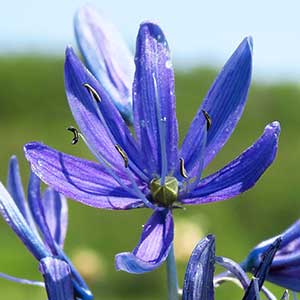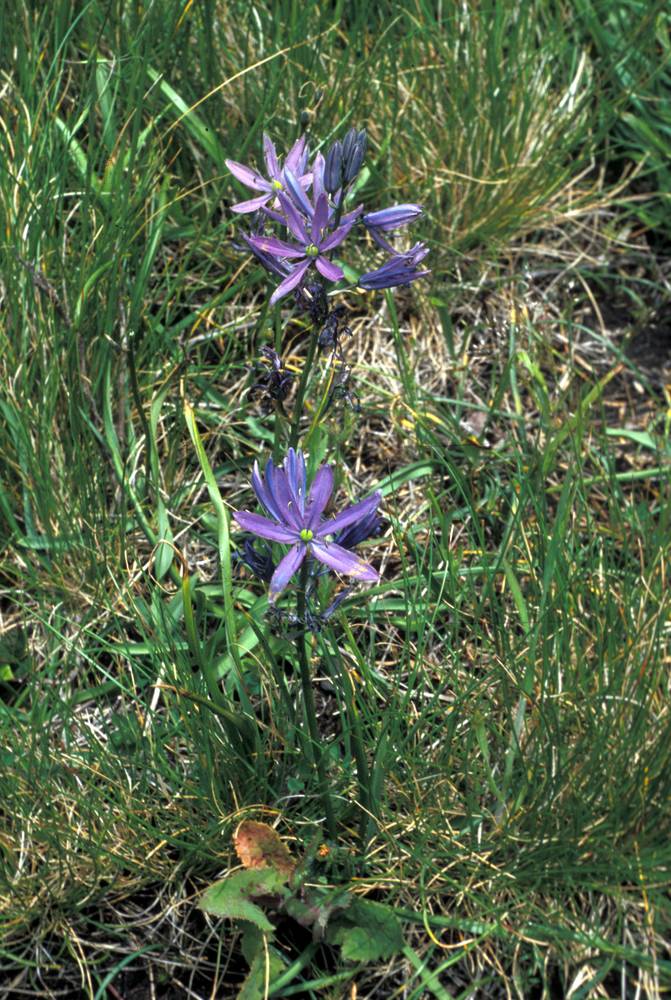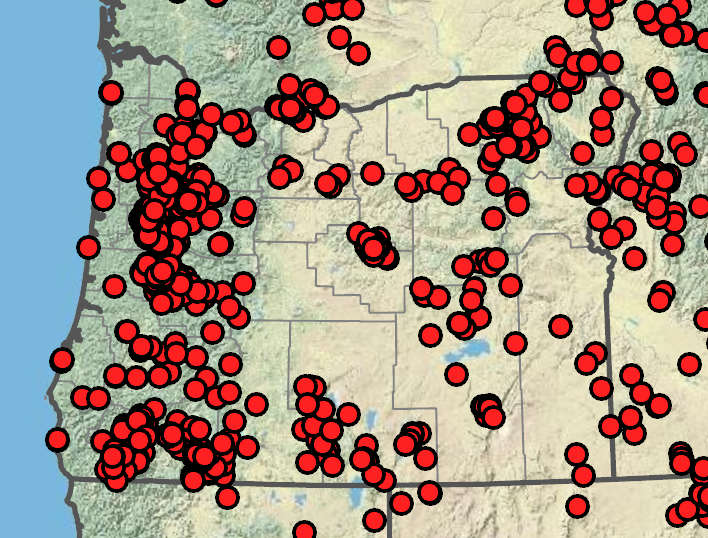Camassia quamash
Camassia
common camas
camas
scapose; erect, glabrous.
3–5, lanceolate to linear, 25–70 cm × 5–15 mm.
basal, 3–20, lanceolate to linear, 15–60 × 0.5–5 cm, glabrous;
margins entire, keeled.
nodes 3–45, with 2–5 or more flowers open at once, sterile bracts 0–2; most longer than pedicels, tan to blue;
pedicel-stem angle broad or less often narrow.
solitary; racemes bracteate or rarely with small side branches, sterile bracts 0–7, present along entire scape below raceme.
corollas bilateral, rarely radial;
tepals 10–35 × 3–5 mm, pale blue to deep blue-violet, initially withering individually or connivently but separating in fruit and persisting on stem;
veins 3–9.
2–130 or more; symmetry radial; bilateral, irregular, or rarely biradial;
sepals often longer and narrower than petals;
tepals free, 6, blue, blue-violet to nearly purple, or white, withering connivently or separately, deciduous or persisting on raceme;
veins 3–9;
ovary superior; locules 3;
nectaries septal;
stamens 6;
stigma lobes 3.
oriented away from or appressed to stem; ovoid-oblong, 15–25 mm.
capsules, globose to oblong; round to triangular in cross section, sometimes strongly veined at dehiscence.
5–10 per locule.
ovate-obovate, 6–36; black, lustrous.
=30.
Camassia quamash
Camassia
Western North America. 8 subspecies; 6 subspecies treated in Flora.
Camassia quamash includes a confusing array of morphologically and geographically diverse subspecies. Differentiating them remains challenging, yet genetic data have revealed a detectable molecular signature between groups that grow “east” (breviflora, quamash, utahensis) and “west” of the Cascades (intermedia, maxima, walpolei). Taxa within these groups are still unresolved (Fishbein et al. 2010).
North America. 6 species; 4 species treated in Flora.
Although small, the genus Camassia is diverse in Oregon, which supports all western species and all but two of ten traditionally recognized subspecies. Multiple broad phylogenetic studies confirm placement of camas in Agavaceae (=Agavoideae, Asparagaceae; APG 2009, Bogler et al. 2006) as does the presence of a similar bimodal karyotype (McKain et al. 2012, Ranker & Hogan 2002). Camassia forms a strongly supported monophyletic clade sister to the rush lilies, Hastingsia (Archibald et al. in press, Halpin & Fishbein 2013), yet species delimitation remains challenging given high morphological and genetic variability, habitat diversity, and potentially recent radiation (Fishbein et al. 2010, Sultany et al. 2007, Uyeda & Kephart 2006). Spring-blooming camas meadows host a diverse assemblage of bee pollinators and are now part of restoration efforts where accurate identification is critical.
Susan Kephart
Susan Kephart




